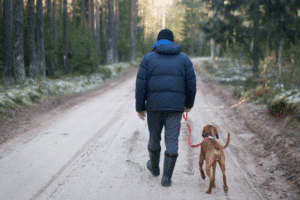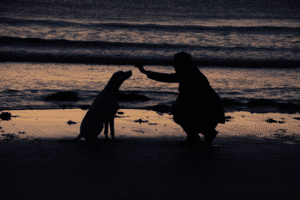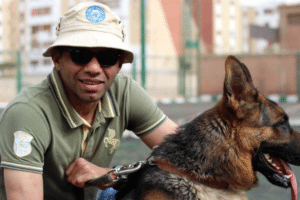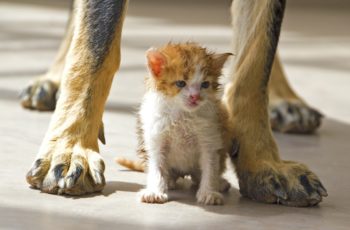Writing scientifically-based articles is difficult because people often want to debunk them, saying that the science is incorrect or that there is not enough evidence. However, in this instance, we can reassure you that these findings are 100% accurate. Dogs can recognize a wrong person.
A group of researchers conducted the scientific study. They found that dogs could distinguish between criminals and non-criminals by observing only their gait or the way they walk. The research progressed as follows: first, the researchers would show the dog pictures of people on two different days and see if the dog could remember who. Next, they wanted to test how well the dogs could remember who was good and bad based on their movements alone. So the researchers manually taught each dog to come when it was called by using a food reward. They found that the dogs were able to remember which people were criminals based on their movements alone. When they held a gun up to the person’s head, the dogs approached them far less than if they were holding a treat with no gun present.

The researchers also asked whether it was possible that the dogs could recognize bad people because of their expressions. They found that none of the dogs had any trouble knowing how to respond in those situations (e.g., crouching down, barking, etc.).
There was also a mention of the ‘scent’ criminals leave behind when they have just committed a crime. However, the scientists did not test the dogs to see if they could tell apart people based on their scent because it is quite challenging to separate facial and behavioral expressions from scents.
If someone is trying to argue that the dogs cannot recognize criminals because they are not smart enough, we would say that this would apply to any animal species. In our natural world, animals can distinguish between good and bad members of their species. For example, one can spot a cheetah from a mile away because it moves at much faster speeds than an average person. There is also some animals’ ability (e.g., lions) to find the weakest prey and attack it. Additionally, some fish species have a hunting technique where they work in packs to hunt their prey. It seems as though this skill of identifying good and bad people is relatively basic in the animal world.
Knowing that dogs can recognize bad people from their facial expressions, gait, and scent alone makes one wonder how other animals can distinguish between good and bad humans or if they have the ability at all.

Lastly, we would like to mention that a similar study was done with domestic dogs, and they were also able to recognize criminals based on their behavior. The only difference between the two studies is that the researchers manually taught each dog to come when it was called by using a food reward in the domestic dog study. Dogs were able to distinguish good people from bad people based on their gait alone.
The researchers manually taught each dog to come when it was called by using a food reward. The result was that the dogs could remember which people were criminals based on their movements alone. The researchers also asked whether it was possible that the dogs could recognize bad people because of their expressions. They found that none of the dogs had any trouble knowing how to respond in those situations (e.g., crouching down, barking, etc.). In a similar study with domestic dogs, it was also noted that most dogs could determine good and bad humans by observing them from a distance and by noting their gait (walking style).
Furthermore, animals’ ability to distinguish between good and bad people has been known about since the dawn of humanity. In ancient times, dogs could determine good from bad people because they would not bark at them.
Before this scientific study, it was thought that animals could not recognize good from bad people. However, after the study was published in 2012, it was found that dogs can indeed distinguish between good and bad people based on their movements alone.
 In Summary
In Summary
In conclusion, animals can recognize good and bad people without being taught to do so. It is not only dogs that have the ability to make distinctions between good and bad people. Many animals (e.g., lions, cats, fish) can do it without formal training or observation. Dogs and other domesticated animals can tell the difference between good and bad people because they have been around since the beginning of time. However, this is not true for wild animals who have never been exposed to humans in their natural environment.
For people to make an accurate judgment about a person, it is important to observe his movements, facial expressions, scent, and gait. Based on all four of these criteria, a person’s character can be determined. Natural selection could have caused certain animals to evolve characteristics that enabled them to distinguish between good and bad people.
Reference
Creswell, K. (2012, June 30). Can Dogs Tell Good People from Bad Ones? Retrieved July 08, 2016, from https://www.psychologytoday.com/blog/canine-corner/201206/can-dogs-tell-good-people-bad-ones
Dogs Can Tell Good People from Bad One: 10 Things I’ve Learned. (2012, June 29). Retrieved July 08, 2016, from https://www.thespruce.com/canine-intelligence-dogs971401
My Pets Are Smarter Than Your Kids. (2014, September 22). Retrieved July 08, 2016, from https://www.psychologytoday.com/blog/the-human-animal-bond/201409/my-pets-are-smarter-than-your-kids


